Caryn’s Thoughts
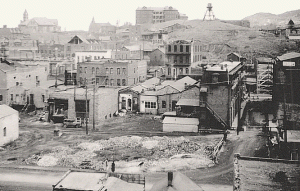 For many years my husband’s Aunt Marian and Uncle John Kanta lived in Helena, Montana. Some of their kids still do, but they didn’t live there in 1935, when on October 18th, a magnitude 6.2 earthquake struck at 10:48pm. The quake had its epicenter right near Helena and it had a maximum perceived intensity of VIII (Severe) on the Mercalli intensity scale. The quake on that date was the largest of a series of earthquakes that also included a large aftershock on October 31 of magnitude 6.0 and a maximum intensity of VIII. Two people died in the first quake, and two others died as a result of the October 31 aftershock. Property damage was over $4 million.
For many years my husband’s Aunt Marian and Uncle John Kanta lived in Helena, Montana. Some of their kids still do, but they didn’t live there in 1935, when on October 18th, a magnitude 6.2 earthquake struck at 10:48pm. The quake had its epicenter right near Helena and it had a maximum perceived intensity of VIII (Severe) on the Mercalli intensity scale. The quake on that date was the largest of a series of earthquakes that also included a large aftershock on October 31 of magnitude 6.0 and a maximum intensity of VIII. Two people died in the first quake, and two others died as a result of the October 31 aftershock. Property damage was over $4 million.
Helena is a pretty city that lies in a valley in western Montana. It lies within the northern part of the Intermountain Seismic Belt (ISB). I didn’t know it then, but this is an area of relatively intense seismicity. It runs from northwestern Arizona, through Utah, Idaho, and Wyoming, before dying out in northwestern Montana. In the area near Helena, it turns to the northwest, where it intersects with the Lewis and Clark fault zone. The Helena earthquake sequence actually began October 3, 1935, with a small earthquake. That quake was followed by a damaging earthquake on October 12th, a magnitude 5.9, intensity VII. That wasn’t the mainshock, however. That one occurred on October 18th, a magnitude 6.2, intensity VIII. A lesser shock followed on October 31st, a magnitude 6.0, intensity VIII, and a further large aftershock on November 28th, a magnitude 5.5, intensity VI. These were just the mainshocks. There were also a total of 1800 tremors recorded 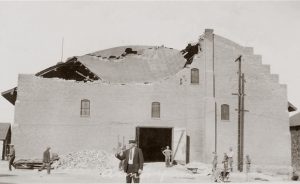 between October 4, 1935 and April 30, 1936. The people of Helena either got used to the shaking, which I can’t imagine, or they were terrified with every tremor, which makes more sense to me.
between October 4, 1935 and April 30, 1936. The people of Helena either got used to the shaking, which I can’t imagine, or they were terrified with every tremor, which makes more sense to me.
The damage to the unreinforced buildings of that era was widespread, with more than 200 chimneys destroyed in the city of Helena. At that time, little was known about reinforcement of buildings in earthquake prone areas. The northeast part of the city, where buildings were constructed on alluvial soil, and in the southern business district, which contained many brick buildings, saw the strongest effects. Alluvial soil is highly porous, which would explain the soil liquification that took place. The most extensively damaged building was the Helena High School, which was completed in August 1935 and had just been dedicated in early October. The school buildings, which had cost $500,000, had not been designed to be earthquake resistant. Another building that was totally destroyed and had to be rebuilt was the Lewis and Clark County Hospital. The October 18 earthquake caused an estimated $3 million of damage to property. The aftershock of October 31 caused further damage estimated at $1 million, particularly to structures already weakened by the October 18 shock. Two people were killed by falling bricks in Helena during the October 18 shock. Two brick masons died as while removing a brick tower during the October 31 aftershock.
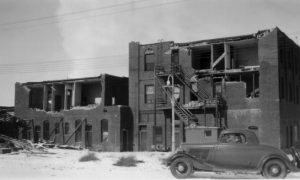 The Red Cross and Federal Emergency Relief Administration set up emergency camps for those displaced by the quake on land at the Montana Army National Guard’s Camp Cooney. Approximately 400 people stayed there the first night, but most had found space with friends or family outside of the damaged area by the end of the week. Some people were too afraid of continued shocks to stay in a house, and they stayed in tents for the next few weeks. The National Guard was deployed in Helena to keep sightseers away from the damaged buildings, and either because of the guard or the good moral values of the people, there was no looting. It is believed that in today’s world, the damages would have been in the $500 million range.
The Red Cross and Federal Emergency Relief Administration set up emergency camps for those displaced by the quake on land at the Montana Army National Guard’s Camp Cooney. Approximately 400 people stayed there the first night, but most had found space with friends or family outside of the damaged area by the end of the week. Some people were too afraid of continued shocks to stay in a house, and they stayed in tents for the next few weeks. The National Guard was deployed in Helena to keep sightseers away from the damaged buildings, and either because of the guard or the good moral values of the people, there was no looting. It is believed that in today’s world, the damages would have been in the $500 million range.
 Prisoners have tried to escape ever since there have been prisons. It is the nature of the situation. No one likes to be locked up. Most escape attempts are not successful, and few are what we would consider well planned, but in the case of Florida prison inmates, Charles Walker and Joseph Jenkins, some kind of good planning must have gone into the escape plan. The two men were serving life sentences, without the possibility of parole, for murder, and so I guess they had nothing to lose by getting caught in an escape attempt. Jenkins was incarcerated for a 1998 murder and armed robbery and a 1997 auto theft. He has been in prison since 2000. Walker was imprisoned for a 1999 murder and has been in custody since 2001.
Prisoners have tried to escape ever since there have been prisons. It is the nature of the situation. No one likes to be locked up. Most escape attempts are not successful, and few are what we would consider well planned, but in the case of Florida prison inmates, Charles Walker and Joseph Jenkins, some kind of good planning must have gone into the escape plan. The two men were serving life sentences, without the possibility of parole, for murder, and so I guess they had nothing to lose by getting caught in an escape attempt. Jenkins was incarcerated for a 1998 murder and armed robbery and a 1997 auto theft. He has been in prison since 2000. Walker was imprisoned for a 1999 murder and has been in custody since 2001.
The men were serving their time in a Panhandle prison called Franklin Correctional Institution in Carrabelle, Florida. accidentally released two inmates from a Panhandle prison who are convicted murderers, according to published reports. Somehow, Walker and Jenkins, both 34, were able to obtain fraudulent orders of sentence modification. Based on those modifications, Jenkins was released on September 27, 2013, and Walker was released on October 8, 2013. Both were former residents of Orlando. Their release was apparently “in accordance with Department of Corrections policy and procedure. However, both of their releases were based on fraudulent modifications that had been made to court orders,” Department of Corrections secretary Michael Crews said.
The judge whose name is on the forged documents is Belvin Perry, Orange County chief judge, who presided  over the Casey Anthony case. Perry’s office said that the judge’s signature was forged in the paperwork calling for reduced sentences for the convicted killers. Apparently, however, while the false documents had problems the one thing that was correct was the judges signature. The judge denies any wrongdoing, saying “It is quite evident that someone forged a court document, filed a motion, and that someone with the aid of a computer, lifted my signature off previous signed documents, which are public reports, affixed that to the document, sent it to the clerk’s office. It was processed and forwarded to doc and the defendant ended up being released,” Perry maintains. He also says, “I have never seen anything like this. You have to give them an A for being imaginative and effective.” The reality is that this was not the first time a prisoner managed to obtain false documents, and probably wont be the last, since no one was caught in this act. The prison waited 17 days before notifying the authorities of the escape. Cybercrime is the newest thing. Easy to perform, hard to catch.
over the Casey Anthony case. Perry’s office said that the judge’s signature was forged in the paperwork calling for reduced sentences for the convicted killers. Apparently, however, while the false documents had problems the one thing that was correct was the judges signature. The judge denies any wrongdoing, saying “It is quite evident that someone forged a court document, filed a motion, and that someone with the aid of a computer, lifted my signature off previous signed documents, which are public reports, affixed that to the document, sent it to the clerk’s office. It was processed and forwarded to doc and the defendant ended up being released,” Perry maintains. He also says, “I have never seen anything like this. You have to give them an A for being imaginative and effective.” The reality is that this was not the first time a prisoner managed to obtain false documents, and probably wont be the last, since no one was caught in this act. The prison waited 17 days before notifying the authorities of the escape. Cybercrime is the newest thing. Easy to perform, hard to catch.
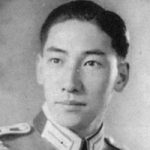 Yang Kyoungjong was a Korean man with an incredible story. In 1938, when he was 18 years old, Kyoungjong was in Manchuria when he was forced into the Kwantung Army of the Imperial Japanese Army to fight against the Soviet Union. It was the outbreak of World War II, and I suppose the Japanese decided they would be better off to make him soldier than to let him languish in a prisoner of war camp. So, fight he did. Korea was ruled by Japan at that time, and Kyoungjong really had no choice to to follow orders.
Yang Kyoungjong was a Korean man with an incredible story. In 1938, when he was 18 years old, Kyoungjong was in Manchuria when he was forced into the Kwantung Army of the Imperial Japanese Army to fight against the Soviet Union. It was the outbreak of World War II, and I suppose the Japanese decided they would be better off to make him soldier than to let him languish in a prisoner of war camp. So, fight he did. Korea was ruled by Japan at that time, and Kyoungjong really had no choice to to follow orders.
During the Battle of Khalkhin Gol, things weren’t going well for the Japanese army, and Kyoungjong was again captured…this time by the Soviet Red Army. He was sent to a Gulag labor camp. While he was there, and with Soviet manpower shortages being what they were, Kyoungjong was presses into service in the Soviet army in 1942. He, along with thousands of other prisoners, were told to fight with the Red Army against Nazi Germany. He was sent to the Eastern Front of Europe.
Somehow, Kyoungjong managed to always be in the wrong place at the wrong time. In 1943, he was once again captured, this time by the Wehrmacht soldiers in eastern Ukraine during the Third Battle of Kharkov. He 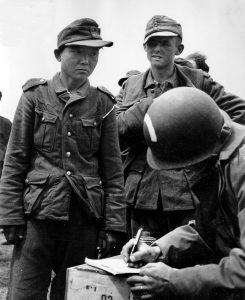 was pressed into service again, and told that he had joined the “Eastern Battalions” to fight for Germany. Kyoungjong was sent to Occupied France to serve in a battalion of former Soviet prisoners of war on the Cotentin peninsula in Normandy, close to Utah Beach. I’m sure he wondered which army he was really a part of.
was pressed into service again, and told that he had joined the “Eastern Battalions” to fight for Germany. Kyoungjong was sent to Occupied France to serve in a battalion of former Soviet prisoners of war on the Cotentin peninsula in Normandy, close to Utah Beach. I’m sure he wondered which army he was really a part of.
During the D-Day landings in northern France by the Allied forces, Kyoungjong was captured by paratroopers of the United States Army in June 1944. The American Army thought he was a Japanese soldier in German uniform at first. At the time, Lieutenant Robert Brewer of the 506th Parachute Infantry Regiment, 101st Airborne Division, reported that his regiment had “captured four Asians in German uniform after the Utah Beach landings, and that initially no one was able to communicate with them.” The good news for Kyoungjong was that he was not going to again be expected to fight with a different army. He was first sent to a prison camp in Britain and later transferred to a camp in the United States.
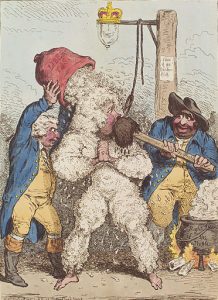 I think most of us have heard of being “tarred and feathered,” as a form of punishment, but we may not really know how much of a punishment it really was. When we think about it, the show, “Home Alone” might come to mind. Of course, some kind of syrup and then the feathers, but that does not really even begin to describe the real act of tarring and feathering.
I think most of us have heard of being “tarred and feathered,” as a form of punishment, but we may not really know how much of a punishment it really was. When we think about it, the show, “Home Alone” might come to mind. Of course, some kind of syrup and then the feathers, but that does not really even begin to describe the real act of tarring and feathering.
In 1776 in Norfolk, Virginia, Captain William Smith was tarred and feathered by a mob which actually included the mayor of Norfolk apparently!! Mobs are never a good thing. They are always out of control, and people who might normally be pretty decent, are dragged into things they might never do otherwise. Captain Smith was suspected of sharing secrets about a local ship owner John Gilcrest smuggling goods, with British officials. It was a terrible offence, but remember that he was “suspected” of this, not convicted. That is the problem with the mobs. They often take matters into their own hands…Vigilante Justice…whether the person is really guilty or not.
Tar and Feather was a medieval form of torture and humiliation. It involved stripping the victim up to his waist, applying tar on his body, and covering him with feathers. That wasn’t the end of it though. The victim was then put on a cart and paraded around the place. Sometimes, the tar was simply poured on the victim’s body and he was made to roll on feathers. This isn’t like syrup or the asphalt tar of today. The tar they used was likely from the pine tar the Colonies were accustomed to distilling for its use on preserving the wood of ships from rot. Hot asphalt tar would critically burn the body. Pine creates charcoal and pine tar when heated up. This pine tar is naturally a sticky substance making it a perfect material for applying to someone who is about to be covered in 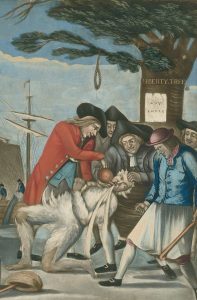 feathers. While that explains why there were no casualties of this form of punishment. Nevertheless, the job of removing the dried pine tar and feathers off the skin was extremely painful.
feathers. While that explains why there were no casualties of this form of punishment. Nevertheless, the job of removing the dried pine tar and feathers off the skin was extremely painful.
After Captain Smith was humiliated by the application of his feathery outfit, he was thrown into the harbor. He almost drowned before being rescued by a passing ship, just as his strength was giving out. He survived, and was later quoted as saying that “…[they] dawbed my body and face all over with tar and afterwards threw feathers on me.” As with most other tar and feathers victims in the decade that followed, Smith was suspected of informing on smugglers to the British Customs service. The punishment was harsh, and it was swift. The colonies were trying to gain their freedom, and that meant that they would fight to the death, and they would never tolerate traitors. I don’t know if Captain Smith was a traitor or not, but no one was ever punished for what they did to him, so there is that.
 Of course, they aren’t really angels, but rather they are God’s laborers on earth…the everyday people who find themselves at the right place, at the right time, to save the life of another person. What each contributed was different, but each contribution was vital to the saving of my husband, Bob Schulenberg’s life that October 14, 2018. God tells each of us things we need to know, and if we are listening, we can find ourselves suddenly in the middle of a life or death situation, in which we have the unique ability to do the right things to stave off death for another human being. It is a mind blowing revelation, but it is nevertheless, a reality.
Of course, they aren’t really angels, but rather they are God’s laborers on earth…the everyday people who find themselves at the right place, at the right time, to save the life of another person. What each contributed was different, but each contribution was vital to the saving of my husband, Bob Schulenberg’s life that October 14, 2018. God tells each of us things we need to know, and if we are listening, we can find ourselves suddenly in the middle of a life or death situation, in which we have the unique ability to do the right things to stave off death for another human being. It is a mind blowing revelation, but it is nevertheless, a reality.
That was the position Bob’s Heaven sent Earthly Angels found themselves in. In an instant, my husband went from loading the groceries in the car and returning the cart to the cart stand, to lying on the ground in the Walmart parking lot, blood running from his head, his skin turning purple, and his eyes open, but not seeing. For all intents and purposes, Bob was dead. But God had a different plan. God’s servant, Sean Pesicka-Taggart saw my husband fall, and immediately rushed to his side, trying to wake him. I was in the car, and heard him speaking, but it didn’t occur to me that he was talking to my husband. A pickup pulled up behind us. In the pickup was Ginger Sims, a nurse working at Wyoming Medical Center at the time. She thought Bob had been hit by a car. She pulled around to park her car and assist, telling her son to press the OnStar and get an ambulance coming. Finally, with things in place to save Bob’s life, a man knocked on my window to ask if I knew “this man.” It finally dawned on me that it was Bob. I believe God intentionally stalled my awareness so I would not be alone with the situation. As I jumped out of  the car and saw my husband, I immediately thought I was going to lose him, but then I stubbornly said, “No!!” Then I got down beside him telling him to wake up…”Come on Bob!!” Ginger heard me talking to him and asked if I knew him. Upon finding out he was my husband, she instructed me in rescue breathing. By now she was getting tired, and suddenly, Laura Lance, Sean’s girlfriend, and a transport worker at Wyoming Medical Center said that she knew CPR and so she spelled Ginger. Then, Valya Boycheva, another nurse at Wyoming Medical Center was leaving Walmart, and saw what was happening. She turned around, came back, and also assisted in CPR. Before I knew it, the ambulance summoned by both Ginger’s son and Sean, was there. I remember thinking how amazing it was that all this was taken care of with almost no effort on my part. And the reality is that it was only about five to seven minutes. How could so much activity have been crammed into that tiny sliver of time? Little did I know that there was more. As they were leaving Walmart, Chelsea and Zack Kessler saw what was happening, and began to pray. Chelsea called her dad, Scott Le Page and his wife, Donna, who also prayed. Lori DeSanti was leaving Walmart too, and she began to pray. These people were an extra amazement, because I knew them all, and yet they had no idea who they were praying for, and I had no idea they were praying. God just sent them there to pray, and they obeyed the call. The fire trucks also came to Bob’s assistance, and we knew one of the firefighters, Jerod Levin, because Bob had worked on the fire trucks when he worked for the City of Casper. Jerod took care of me…which I needed very much. He got me into the ambulance, so I could go with Bob, and then he took the time to bring my car to the hospital for me so I would
the car and saw my husband, I immediately thought I was going to lose him, but then I stubbornly said, “No!!” Then I got down beside him telling him to wake up…”Come on Bob!!” Ginger heard me talking to him and asked if I knew him. Upon finding out he was my husband, she instructed me in rescue breathing. By now she was getting tired, and suddenly, Laura Lance, Sean’s girlfriend, and a transport worker at Wyoming Medical Center said that she knew CPR and so she spelled Ginger. Then, Valya Boycheva, another nurse at Wyoming Medical Center was leaving Walmart, and saw what was happening. She turned around, came back, and also assisted in CPR. Before I knew it, the ambulance summoned by both Ginger’s son and Sean, was there. I remember thinking how amazing it was that all this was taken care of with almost no effort on my part. And the reality is that it was only about five to seven minutes. How could so much activity have been crammed into that tiny sliver of time? Little did I know that there was more. As they were leaving Walmart, Chelsea and Zack Kessler saw what was happening, and began to pray. Chelsea called her dad, Scott Le Page and his wife, Donna, who also prayed. Lori DeSanti was leaving Walmart too, and she began to pray. These people were an extra amazement, because I knew them all, and yet they had no idea who they were praying for, and I had no idea they were praying. God just sent them there to pray, and they obeyed the call. The fire trucks also came to Bob’s assistance, and we knew one of the firefighters, Jerod Levin, because Bob had worked on the fire trucks when he worked for the City of Casper. Jerod took care of me…which I needed very much. He got me into the ambulance, so I could go with Bob, and then he took the time to bring my car to the hospital for me so I would  have a way home later.
have a way home later.
God’s Earthly Angels. No, they were just people, but God gave them the opportunity to act at a time when their own special skills were desperately needed to save the life of a man most of them didn’t even know. When we think of angels, we think of beings who go to battle for us, when we need them most. That is exactly what these people did, so I guess angels is an appropriate word for them. All is know is that I…we, Bob and I, as well as our families, are forever indebted to these wonderful people who went to battle that day in the Eastside Walmart parking lot in Casper, Wyoming to fight for the life of my precious husband, Bob…and praise God…they won!!
 My nephew, Ryan Hadlock is a Compression Operator at Fleur de Lis (FDL), which used to be Anadarko, where his Uncle Mike Stevens also works. They have enjoyed working together, even though they are in different areas of the company. Ryan works on the natural gas side, and I believe Mike is on the oil side. Ryan’s job is to maintain the compressors, making sure they work right, Fixing them when they don’t, taking readings, etc. Ryan enjoys his job, and even picks up extra shifts once in a while. His job has been good to him, and has afforded them the money they need to live the life they want to.
My nephew, Ryan Hadlock is a Compression Operator at Fleur de Lis (FDL), which used to be Anadarko, where his Uncle Mike Stevens also works. They have enjoyed working together, even though they are in different areas of the company. Ryan works on the natural gas side, and I believe Mike is on the oil side. Ryan’s job is to maintain the compressors, making sure they work right, Fixing them when they don’t, taking readings, etc. Ryan enjoys his job, and even picks up extra shifts once in a while. His job has been good to him, and has afforded them the money they need to live the life they want to.
Ryan has always been an outdoorsman. He and his dad, Chris have gone fishing, and camping, and they both love sports of all kinds too. Ryan and his wife, Chelsea  decided to buy a new fifth-wheel trailer this year, and since then, they have gone camping crazy. Most weekends find them and their kids, Ethan and Aurora on the road headed somewhere to go camping. They have taken several great trips this past summer, and my husband, Bob and I got to meet up with them in the Black Hills for the Custer Fireworks Display. We joined them and Ryan’s sister, Jessi her husband, Jason, and their daughter, Adelaide too. Ryan, Chelsea, and the kids also made trips around Wyoming and into Colorado. They all had a wonderful time, and we felt honored to get to join them for part of it.
decided to buy a new fifth-wheel trailer this year, and since then, they have gone camping crazy. Most weekends find them and their kids, Ethan and Aurora on the road headed somewhere to go camping. They have taken several great trips this past summer, and my husband, Bob and I got to meet up with them in the Black Hills for the Custer Fireworks Display. We joined them and Ryan’s sister, Jessi her husband, Jason, and their daughter, Adelaide too. Ryan, Chelsea, and the kids also made trips around Wyoming and into Colorado. They all had a wonderful time, and we felt honored to get to join them for part of it.
Ryan is a happy guy…mostly I’m sure, because her is happily married and has the family he always wanted. He keeps things lively with is jokes and teasing, and his kids are learning to joke and tease. Ryan and Chelsea find it hard to believe that Ethan is in 8th grade and Aurora is in 4th grade. Where have all the years gone. Time flies when you are having fun, and the Hadlock family is definitely having fun.

Ryan and Chelsea have been doing home Bible studies with their kids this summer, and the whole family is really growing spiritually. The study is designed to make a relationship with God, a personal thing for each of them, and it has been very successful. The kids have been telling my sister, Allyn Hadlock, who is their grandma, just how much they have learned. This has been an especially enlightening study for Ethan and Aurora, who have been telling their grandma all about how good God is. It is always an important thing for the husband in a family to take the spiritual lead, and Ryan has done that very well. We are very proud of him in this endeavor. Today is Ryan’s birthday. Happy birthday Ryan!! Have a great day!! We love you!!
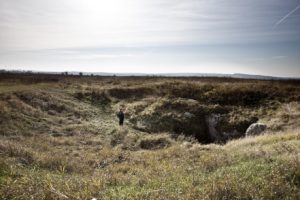 During World War II, and Jews who didn’t want to entrust their survival to the Nazis, had to make a way of escape or find a place to hide. For those who hoped against hope that the Nazis didn’t really hate them, or that the war would end very soon, the chance to escape came and went before they had really given the situation much thought. This was especially true for the Jewish people who had been born in the countries they now found themselves outcasts of.
During World War II, and Jews who didn’t want to entrust their survival to the Nazis, had to make a way of escape or find a place to hide. For those who hoped against hope that the Nazis didn’t really hate them, or that the war would end very soon, the chance to escape came and went before they had really given the situation much thought. This was especially true for the Jewish people who had been born in the countries they now found themselves outcasts of.
Zaida Stermer, his wife Esther, and their six children, of Korolowka, Ukraine, dug up the last of their possessions from behind their house, loaded their wagons with food and fuel, and drove away into the darkness. It was October 12, 1942. The Stermers weren’t alone. Traveling with them were about two dozen friends and family members, all Jews…and all in a lot of trouble. They had almost waited too long, and now the Nazis were out to kill all the Jews in the village. Ukraine had been under German occupation for about a year by then, and they had hoped that the war would end, and they could get back to their lives, but instead, the situation was exploding, and they had to get out while they still could.
The group made their way quietly about 5 miles to the north of town. With the Nazi “roundups and mass executions” of Ukrainian Jews in full swing, they were headed to a dirt road that ended at a sinkhole. There they made their way into a summertime tourist attraction known as the Verteba cave. They knew this was only 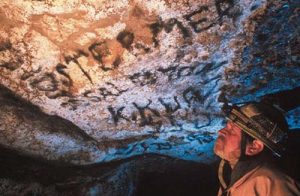 going to be a temporary solution, because in the summer, the tourists would be back, and they would be discovered. They hoped they had until summer.
going to be a temporary solution, because in the summer, the tourists would be back, and they would be discovered. They hoped they had until summer.
Modern cave explorers would not consider going underground without reliable light sources, technical and safety gear, navigation experience, clothing to stave off hypothermia, and of course an adequate supply of food and fresh water. The Stermers and their little band of survivors had none of these things. They went in in the dark, and had no light in the morning either. They fumbled their way further and further into the cave, hoping they could find there way back out. The cave had little ventilation and no real water supply, except what seeped through the rocks. Cooking was dangerous, and they almost lost a child to smoke inhalation. They moved the cooking further into the cave where they found better ventilation. Then came the worst night of all…
They had been in Verteba about four weeks, and thinking they might make it when their optimism was shattered. Suddenly in the dark they heard the sound of boots, and the rattling of guns. Someone yelled in Yiddish, “The Germans are here!! They’ve discovered us!!” Just as suddenly, and before anyone could think twice, Ester spoke up, “Very well, so you have found us. What do you think? Do you think that unless you kill us the Fuhrer will lose the war? Look at how we live her, like rats. All we want is to live, to survive the war years. Leave us here.” She was stalling!! She was allowing the others time to escape. As the stunned Germans listened to this little lady, the others hurried to the escape route they had found earlier. In the end, the  Germans only got eight of the cave dwelling Jews. Miraculously, Esther escaped. They hid out with friends throughout April 1943, but things were heating up again, and Esther told her family, “We are not going to the slaughterhouse.” She said to her son, Nissel, “Go to the forest, find a hole, anything.” It was thanks to Nissel that the family survived. Nissel located the cave known as the Priest’s Grotto. It was thought that the world record for living underground was 205 days, but the true record was set by the women and children who survived the Priest’s Grotto, by living completely underground for 344 days without seeing the outside world. It was a tough way to live, but they did survive, and that is a miracle.
Germans only got eight of the cave dwelling Jews. Miraculously, Esther escaped. They hid out with friends throughout April 1943, but things were heating up again, and Esther told her family, “We are not going to the slaughterhouse.” She said to her son, Nissel, “Go to the forest, find a hole, anything.” It was thanks to Nissel that the family survived. Nissel located the cave known as the Priest’s Grotto. It was thought that the world record for living underground was 205 days, but the true record was set by the women and children who survived the Priest’s Grotto, by living completely underground for 344 days without seeing the outside world. It was a tough way to live, but they did survive, and that is a miracle.

 I first met my nephew, Riley Birky, when he was 9 years old, and his mom, Rachel Schulenberg married my brother-in-law, Ron Schulenberg. Over the years that he has been in our family, Riley has gone through the fairly typical years of a kid, with the teen years being typically the most tumultuous, as is the case with most teens. While those were tough times for Riley, one thing that you could always count on, was that you could always count on Riley. Riley might not have always been excited about helping out, but if he said he would help you with something, he would. He always had a tendency to take care of everybody before himself. If there is a call for assistance with something, Riley will be the first to respond. His mom say of Riley, “He is so brave and committed and always striving to do his best.”
I first met my nephew, Riley Birky, when he was 9 years old, and his mom, Rachel Schulenberg married my brother-in-law, Ron Schulenberg. Over the years that he has been in our family, Riley has gone through the fairly typical years of a kid, with the teen years being typically the most tumultuous, as is the case with most teens. While those were tough times for Riley, one thing that you could always count on, was that you could always count on Riley. Riley might not have always been excited about helping out, but if he said he would help you with something, he would. He always had a tendency to take care of everybody before himself. If there is a call for assistance with something, Riley will be the first to respond. His mom say of Riley, “He is so brave and committed and always striving to do his best.”
Those kid days are long gone now, and Riley is grown up. He works very hard doing concrete work at Griffis Quality Fencing and Welding in Powell, Wyoming. Riley likes his job and is a great employee. He finds the work interesting. Riley has grown into a good man, and that is one of the best things that can be said about a man. Riley likes his job, but it isn’t all that he is about. Like most people, your job is what you do to earn money to do what you want to do. Riley likes adventure…doing something new and exciting. He also loves the outdoors.

 Riley has grown up so much in the past year. He has a great group of friends, who have been there for him. He has also been blessed with a wonderful girlfriend, Sierah Martin, and her two-year-old son, Jace. Riley loves kids, and was always such a great big brother to his brother, Tucker Schulenberg. They don’t get to see each other as much as they used to, since Tucker lives in Casper, but they are still close. Riley was also blessed this year to become a godparent to a sweet little boy. I think that has been a great honor to him. Today is Riley’s 20th birthday. Happy birthday Riley!! Have a great day!! We love you!!
Riley has grown up so much in the past year. He has a great group of friends, who have been there for him. He has also been blessed with a wonderful girlfriend, Sierah Martin, and her two-year-old son, Jace. Riley loves kids, and was always such a great big brother to his brother, Tucker Schulenberg. They don’t get to see each other as much as they used to, since Tucker lives in Casper, but they are still close. Riley was also blessed this year to become a godparent to a sweet little boy. I think that has been a great honor to him. Today is Riley’s 20th birthday. Happy birthday Riley!! Have a great day!! We love you!!
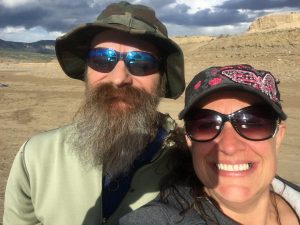
 My nephew, Steve Moore loves to go camping in the Big Horn Mountains, and takes his family up there often. They hike the area in search of rocks and artifacts. Steve is an outdoor kind of guy, and is in his element when he is in the great outdoors. It’s not that Steve can’t do other things, but the great outdoors is just where he feels most at home.
My nephew, Steve Moore loves to go camping in the Big Horn Mountains, and takes his family up there often. They hike the area in search of rocks and artifacts. Steve is an outdoor kind of guy, and is in his element when he is in the great outdoors. It’s not that Steve can’t do other things, but the great outdoors is just where he feels most at home.
Steve and my niece, Machelle Moore have two sons…Weston, who is 20 years old; and Easton, who is 16 years old. Of course both boys drive these days, and anyone who has ever owned a vehicle knows that they need occasional maintenance and repair. Most of 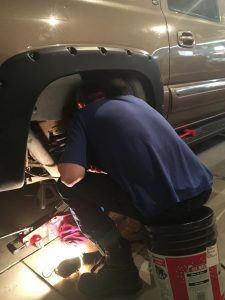
 the time, a vehicle can go a long time before needing repair, but for the Moore family, lately it seems like every vehicle needs something. Steve has been quite busy with multiple maintenance projects of the various vehicles. Unfortunately, while Steve can work on vehicles, he really hates working on vehicles. He has fixed brakes and rotors on the truck he and Machelle own. Then Weston’s new truck needed so work done. After that Easton’s car needed a power steering pump. And just when he thought he was done, Weston’s truck needs work done on the steering and tie rods, because the tires are wearing fast. Then, Steve and Machelle’s other truck needs some work in that sale department, because it’s a little squirrely on the road. Their Tahoe needs the same things as Weston’s vehicle. It’s not as bad as Weston’s, but they need to get it done before they have to get new tires too. They fully understand that vehicles need work, but it would be nice if things to happen one thing
the time, a vehicle can go a long time before needing repair, but for the Moore family, lately it seems like every vehicle needs something. Steve has been quite busy with multiple maintenance projects of the various vehicles. Unfortunately, while Steve can work on vehicles, he really hates working on vehicles. He has fixed brakes and rotors on the truck he and Machelle own. Then Weston’s new truck needed so work done. After that Easton’s car needed a power steering pump. And just when he thought he was done, Weston’s truck needs work done on the steering and tie rods, because the tires are wearing fast. Then, Steve and Machelle’s other truck needs some work in that sale department, because it’s a little squirrely on the road. Their Tahoe needs the same things as Weston’s vehicle. It’s not as bad as Weston’s, but they need to get it done before they have to get new tires too. They fully understand that vehicles need work, but it would be nice if things to happen one thing 
 at a time. Thank God, that has been the way it was, or Steve might have been worn out completely.
at a time. Thank God, that has been the way it was, or Steve might have been worn out completely.
In between all the mechanic work, Steve and Machelle have been able to get fire wood this summer. They have been getting wood for Machelle’s parents, LJ and Debbie Cook too. This year they were able to get everybody enough wood to get through the winter, even enough for LJ to hang out in the garage tinkering on his projects; and for them to hang out by their fire pit too. Steve is a great son-in-law, a great husband, and a great dad to his family. Today is Steve’s birthday. Happy birthday Steve!! Have a great day!! We love you!!
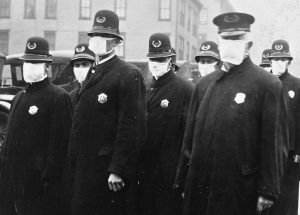 As the Covid-19 Pandemic has spread across our nation, so has the battle for or against the wearing of face masks. Part of the problem has been the conflicting analysis as to the value of the masks between one doctor and another, one politician and another, or even the same doctor at different times during the crisis. Many states, cities, and even establishments have rules about wearing a mask, with varied levels of enforcement. Of course, we were told to “shelter in place” and close any “non-essential” businesses, a catastrophic event for the economy. Everything from schools to bars, and theaters to salons was closed. Cities became virtual ghost towns, and things like Facebook and Twitter, Zoom and Google Classroom, texting and phone calls became vital. People’s sanity began to take a hit, and loneliness became the norm…especially for anyone who lived alone.
As the Covid-19 Pandemic has spread across our nation, so has the battle for or against the wearing of face masks. Part of the problem has been the conflicting analysis as to the value of the masks between one doctor and another, one politician and another, or even the same doctor at different times during the crisis. Many states, cities, and even establishments have rules about wearing a mask, with varied levels of enforcement. Of course, we were told to “shelter in place” and close any “non-essential” businesses, a catastrophic event for the economy. Everything from schools to bars, and theaters to salons was closed. Cities became virtual ghost towns, and things like Facebook and Twitter, Zoom and Google Classroom, texting and phone calls became vital. People’s sanity began to take a hit, and loneliness became the norm…especially for anyone who lived alone.
It’s been a grim time, but it isn’t the first time. During the 1918 Spanish Flu Pandemic, mask wearing started with the first masks being made out of gauze, which was quite porous. Still, in an effort to stop the spread, or as we would say these days, flatten the curve, all the people were now asked to wear masks. In fact, in the Fall of 1918, it became mandatory. With the second surge in December 1918, new restrictions went into place. The January 1919 ordinance had a much larger impact in creating resistance to wearing a mask in public by American citizens. However, it too was short lived, and on February 1, 1919 the city ordinance requiring every citizen of San Francisco going out in public to wear masks was voted down. The mandatory mask laws for COVID-19 are not new. This has already happened twice in American history and if you do feel strongly about not wearing one, it has been protested successfully before in a pandemic caused by a much deadlier virus.
I don’t believe the resistance, with was called the Anti-Mask League of San Francisco fell along party lines, like  much of today’s resistance seems to be, but were rather a diverse bunch of individuals with varying professional backgrounds. Its members included physicians, libertarians, and many others. Many of the same arguments we have today, were in place then, and it is debatable as to whether or not the masks of today are any better than the ones back then…with the possible exception of the medical grad hazard wear, the N-95 mask, and the Head gear. Pretty much everything we’ve tried with Covic-19 was also used in 1918 to try to prevent the spread of the flu…close schools, wear masks, don’t cough or sneeze in someone’s face, avoid large events and hold them outside when possible, and of course, no spitting. There were many ways to get the word out, like in Philadelphia, where streetcar signs warned “Spit Spreads Death.” In New York City, officials enforced no-spitting ordinances and encouraged residents to cough or sneeze into handkerchiefs (a practice that caught on after the pandemic). The city’s health department even advised people not to kiss “except through a handkerchief,” and wire reports spread the message around the country. I don’t know…does any of this sound familiar to you, because it sure does to me. I guess there really is nothing new under the sun. In western states, some cities even called mask ordinances a patriotic duty. In October 1918, the San Francisco Chronicle ran a public service announcement telling readers that “The man or woman or child who will not wear a mask now is a dangerous slacker.” This was in reference to the type of World War I “slacker” who didn’t help the war effort. One sign in California threatened, “Wear a Mask or Go to Jail.” The PSA in the Chronicle appeared on October 22, just over a week before San Francisco had scheduled its mask ordinance to begin on November 1. It was signed by the mayor, the city’s board of health, the American Red Cross and several other departments and organizations, and it was very clear about its message: “Wear a Mask and Save Your Life!”
much of today’s resistance seems to be, but were rather a diverse bunch of individuals with varying professional backgrounds. Its members included physicians, libertarians, and many others. Many of the same arguments we have today, were in place then, and it is debatable as to whether or not the masks of today are any better than the ones back then…with the possible exception of the medical grad hazard wear, the N-95 mask, and the Head gear. Pretty much everything we’ve tried with Covic-19 was also used in 1918 to try to prevent the spread of the flu…close schools, wear masks, don’t cough or sneeze in someone’s face, avoid large events and hold them outside when possible, and of course, no spitting. There were many ways to get the word out, like in Philadelphia, where streetcar signs warned “Spit Spreads Death.” In New York City, officials enforced no-spitting ordinances and encouraged residents to cough or sneeze into handkerchiefs (a practice that caught on after the pandemic). The city’s health department even advised people not to kiss “except through a handkerchief,” and wire reports spread the message around the country. I don’t know…does any of this sound familiar to you, because it sure does to me. I guess there really is nothing new under the sun. In western states, some cities even called mask ordinances a patriotic duty. In October 1918, the San Francisco Chronicle ran a public service announcement telling readers that “The man or woman or child who will not wear a mask now is a dangerous slacker.” This was in reference to the type of World War I “slacker” who didn’t help the war effort. One sign in California threatened, “Wear a Mask or Go to Jail.” The PSA in the Chronicle appeared on October 22, just over a week before San Francisco had scheduled its mask ordinance to begin on November 1. It was signed by the mayor, the city’s board of health, the American Red Cross and several other departments and organizations, and it was very clear about its message: “Wear a Mask and Save Your Life!”
“Red Cross headquarters in San Francisco made 5,000 masks available to the public at 11:00am, October 22. By noon it had none,” wrote the late historian Alfred W Crosby in America’s Forgotten Pandemic: The Influenza of 1918. “By noon the next day Red Cross headquarters had dispensed 40,000 masks. By the twenty-sixth 100,000 had been distributed in the city… In addition, San Franciscans were making thousands for themselves.” Lasting from February 1918 to April 1920, the Spanish Flu Pandemic infected 500 million people…about a third  of the world’s population at the time, in four successive waves. The death toll is typically estimated to have been somewhere between 17 million and 50 million, and possibly as high as 100 million, making it one of the deadliest pandemics in human history. With all the safeguards, and the lack of success in “stopping the spread,” I guess it is up to each individual to decide on the effectiveness, or the lack thereof, concerning the safeguards that were put in place. To me, it seems that we have done pretty much the same things today as they did in 1918, so only time will tell us if they were successful, or a waste of time and money. Still, since the Spanish Flue had 4 waves, it doesn’t seem like we successfully stopped anything.
of the world’s population at the time, in four successive waves. The death toll is typically estimated to have been somewhere between 17 million and 50 million, and possibly as high as 100 million, making it one of the deadliest pandemics in human history. With all the safeguards, and the lack of success in “stopping the spread,” I guess it is up to each individual to decide on the effectiveness, or the lack thereof, concerning the safeguards that were put in place. To me, it seems that we have done pretty much the same things today as they did in 1918, so only time will tell us if they were successful, or a waste of time and money. Still, since the Spanish Flue had 4 waves, it doesn’t seem like we successfully stopped anything.

